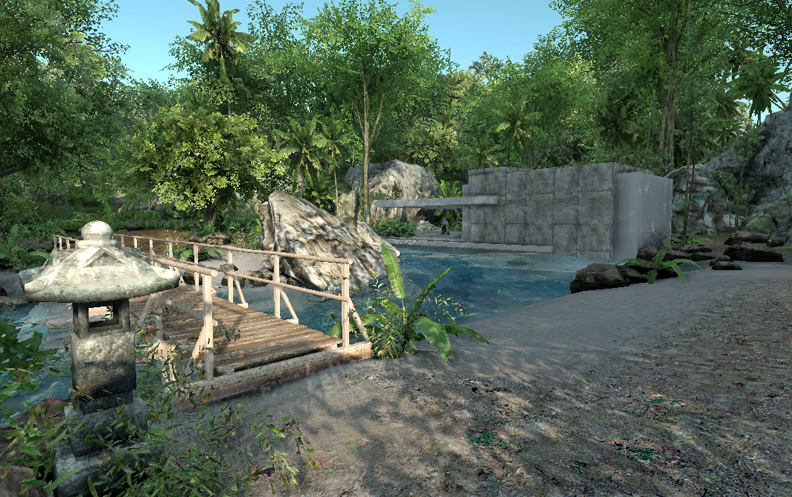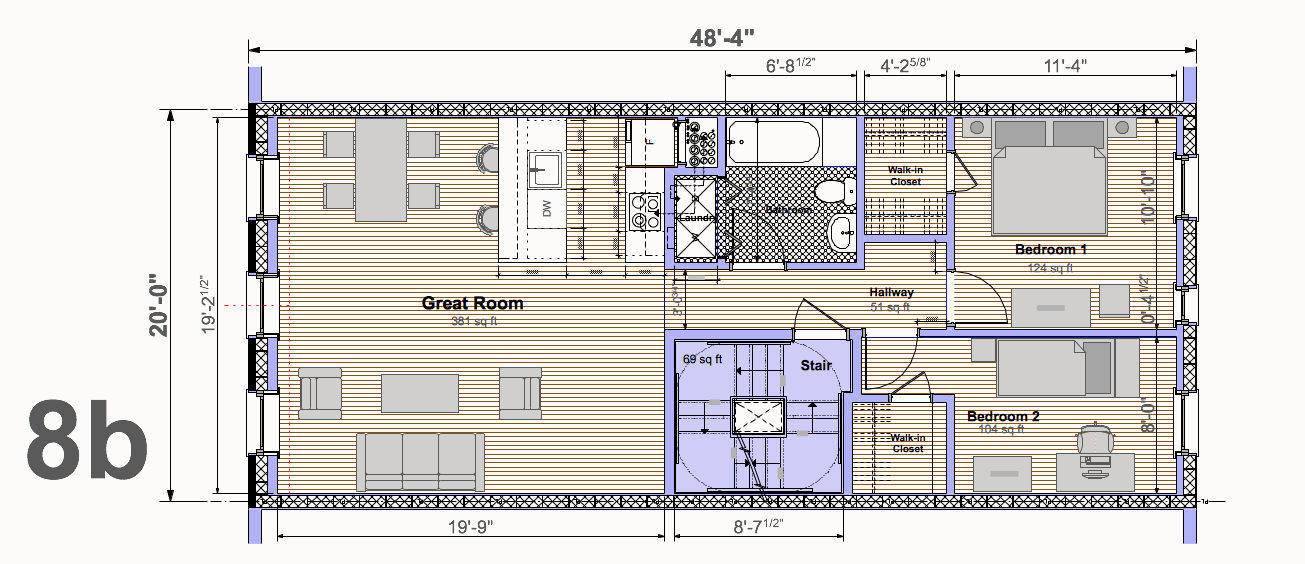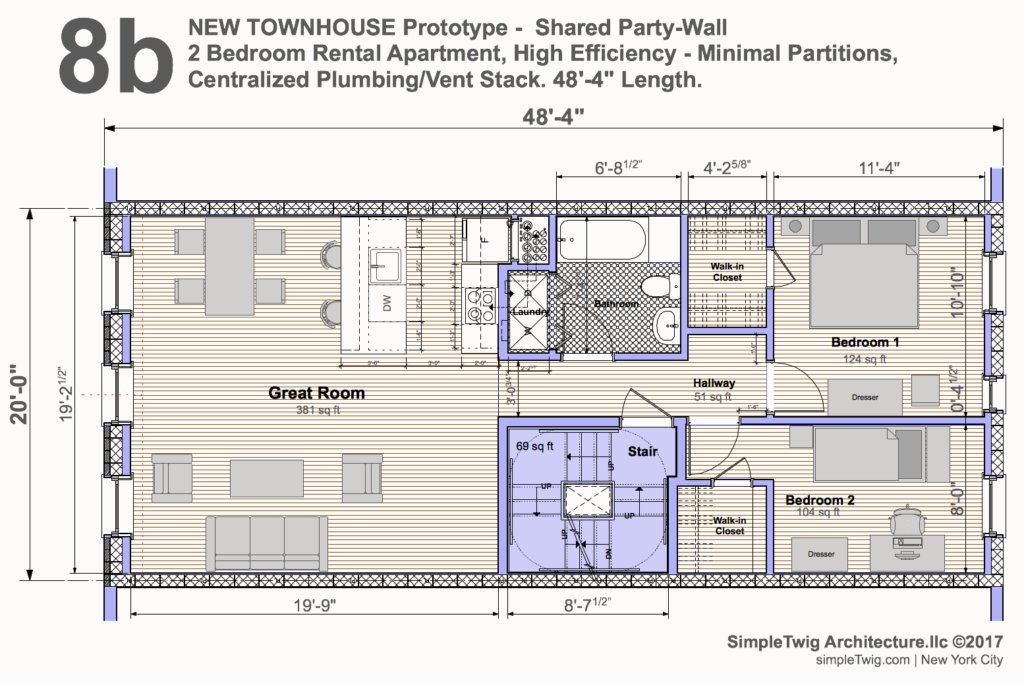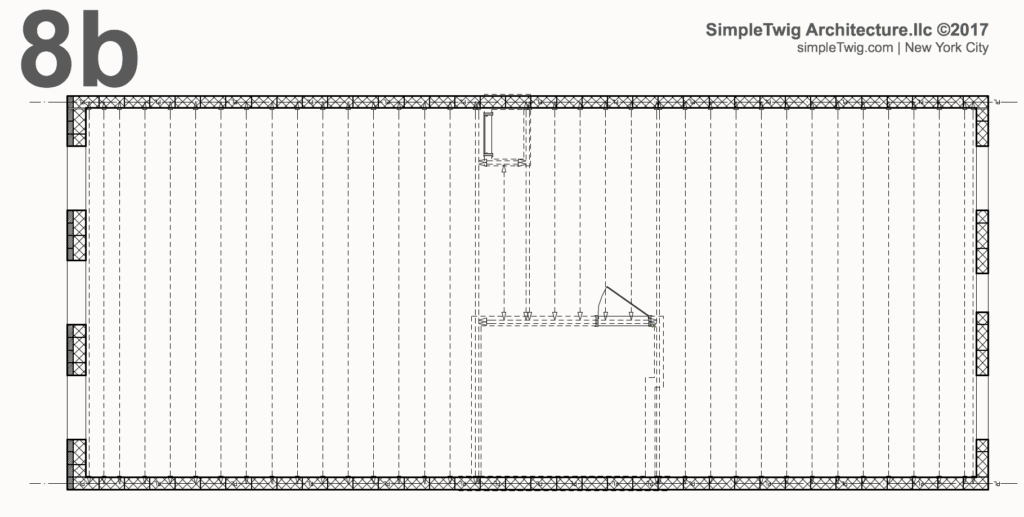Building a townhouse from scratch has its advantages and results in a slightly different layout than the previous floor plans designed as retrofits into existing townhouses of varying sizes. In new construction, typical FAR’s (Floor Area Ratio) allows for the length of the new structure on typical 100′ lots to be what it ideally wants to be.
In the this version we design the townhouse to have shared party-walls, thus giving the interior enough extra space that we can slightly shorten the building to 48′-4″, 1′-8″ less than the infill version in the next article. This helps lower the cost of construction without sacrificing comfort, and provides a means to save ‘allowable square feet’ on every floor shift that savings to add an extra floor for a Great Room over looking a roof terrace.
Features that are ‘better’ than the next version include:
- No CMU stair core, resulting in a shorter building length than 8c (next article), the 50′ version.
- Note the SF for the Great Room is about the same with version 8c.
- The walls of the stair are 2 hour fire-rated walls, as is the plumbing stack yet take up less room than version 8c.
- The Bedrooms and Kitchen are about the same size as version 8c.
- Because walls aren’t CMU the refrigerator is recessed.
- The laundry features side by side units, which wasn’t possible in version 8c.
- As mentioned before, the building spaces, while essentially the same size as version 8c, is 1′-8″ shorter in length, so it will cost less to build.
- Also, since the stair and bathroom aren’t surrounded by CMU block walls, this version will cost less to build by avoiding those walls
- The joists run from party-wall to party-wall, unlike in version 8c. The span is short enough that there is no need for an internal bearing wall as found in all existing townhouses.
- The structural slab is concrete on decking, further deadening sound transmission.
Structure
This structure is ideal because of its simplicity. The front facade receives a finished treatment, like brick, while the rear facade receives stucco. CMU block is superior to a stud system in that it can expel moisture if wet, can resist fire, can stop sound migration and is secure from break-ins. It is also resistant to high winds making it feel safe and secure during severe storms.
Summary
If one can use an existing shared party-wall, or in this case build a new party-wall, that is the way to go. A word of warning though, typical brick party-walls are not reinforced and thus will not resist earthquakes or explosions (like gas explosions) thus making their use not a wise choice. Today’s code required a separation between buildings of an inch, to allow for movement during an earthquake. Still, if you’re building a new shared party-wall earthquakes are no longer an issue since it can be reinforced, and one gets to use the extra square footage to make their spaces larger.
It should be obvious through the studies being done here, this being version 8b, that any number of factors can have an impact on the layout of an apartment. For instance, this scheme has room for side by side laundry machines, were as version 8c (see next article) which is a full 50′-0″ in length has the room only for stackable units, and small ones at that.
Please leave you comments, they’re always appreciate.



